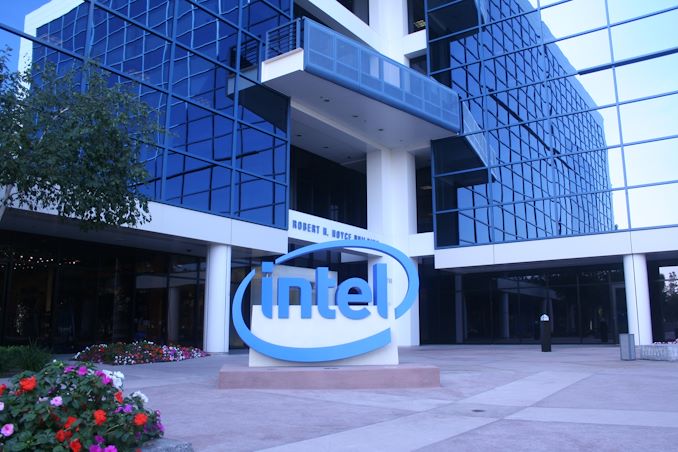Intel Reorganizes In Wake of 7nm Woes; Chief Engineering Officer Murthy Renduchintala To Depart
by Ryan Smith on July 27, 2020 5:30 PM EST
Coming in the wake of last week’s disclosure that their 7nm yields are roughly a full year behind schedule, Intel this afternoon has announced that they are reorganizing the technology side of the company. Key to this change is that Intel is breaking up its monolithic Technology, Systems Architecture and Client Group (TSCG) into several smaller groups, all of which will report directly to CEO Bob Swan. Meanwhile Intel’s chief engineering officer, Dr. Murthy Renduchintala, who had been leading the TSCG, will be departing the company at the end of next week. The reorganization is effective immediately.
As a result of this reorganization, TSCG is being broken up into five groups focusing on manufacturing and architecture. These are:
- Technology Development: Focused on developing next-generation process nodes. Led by Dr. Ann Kelleher.
- Manufacturing and Operations: Focused on ramping current process nodes and building out new fab capacity. Led by Keyvan Esfarjani.
- Design Engineering: A recently-created group responsible for Intel’s technology manufacturing and platform engineering. Led on an interim basis by Josh Walden while Intel searches for a permanent leader.
- Architecture, Software and Graphics: Developing Intel’s architectures and associated software stacks. Led by Raja Koduri (continuing).
- Supply Chain: Handling Intel’s supply chain and relationships with important suppliers. Led by Dr. Randhir Thakur (continuing).
It should be noted that while Intel’s brief announcement does not mention last week’s disclosure, the timing and resulting personnel changes are unmistakably related to the 7nm delay. Today’s reorganization is the second shuffle for Intel in as many months, as the company reorganized a number of product groups after Jim Keller departed for (honest to goodness) personal reasons.
Meanwhile, TSCG’s former president, Dr. Murthy Renduchintala, will be departing the company on August 3rd. Renduchintala joined Intel in 2015, and for most of the past half-decade has been responsible for overseeing all of TSCG’s efforts, and especially involved in the development of the company’s next-generation process nodes. Intel’s reorganization announcement makes no specific mention of Renduchintala beyond his date of departure, however it is difficult to imagine that this is anything other than Intel pushing out Renduchintala in light of their process woes. More than anything else, Renduchintala was the face of Intel’s monolithic, vertically-integrated design and manufacturing strategy; a strategy that is no more as Intel seriously investigates building parts of leading-edge processes at competing fabs.
Going forward, the task of developing Intel’s 7nm and 5nm process nodes will be led by Dr. Ann Kelleher. Kelleher gets the incredibly important (but less-than-enviable) challenge of getting Intel’s fab development process back on track, as Intel seeks to regain its crown as the world’s leading chip fab. Kelleher was previously the head of Intel’s manufacturing group, overseeing the recent ramp-up of Intel’s 10nm process. Meanwhile Dr. Mike Mayberry, a central figure in Intel’s labs who was already set to retire this year, will be staying on until then to assist in the transition.
Overall, while Intel’s reorganization is unlikely to dramatically change the company’s day-to-day operations, it’s very much the start of a new era for the company. As Intel’s ongoing manufacturing woes have driven them to look towards outside fabs for more products, the company’s traditional vertically-integrated structure is less than ideally suited for the task – and as much as Intel manufacturing would like to keep Intel-designed products within the company, Intel’s chip and architecture groups need to be able to freely look elsewhere. And this reorganization is going to be an important step in enabling that.
Source: Intel












140 Comments
View All Comments
Oxford Guy - Saturday, August 1, 2020 - link
Or, people could proofread their own comments before posting and accept responsibility for their posts. But, I suppose teachers should be fired when students turn in essays with spelling and grammar errors.Cullinaire - Saturday, August 1, 2020 - link
hear, hear!zamroni - Tuesday, July 28, 2020 - link
So during murthy time, we can say intel stucks on 14nm.The 10nm can't produce xeon, so it is not a fully functional one,while Intel's most profitable product is surely the high margin server processors.
vol.2 - Tuesday, July 28, 2020 - link
I had this awful sinking feeling about Intel's business direction back in like 2012 when they were still talking about how they were going to keep executing on Moore's law when it was already clear as day that process nodes weren't going to be coming so easily. There was a great article on quantum machines around back then that describes how size (extremely small size) effects the way physics works in relationship to energy and how different solutions were going to be necessary to create *very* small gates. For them to succeed, I think they need to start putting more energy into architecture than nodes, in parallel with next gen research. Or perhaps it's been too long at this point and they have dug their own grave. I guess we'll find out.12xu - Wednesday, July 29, 2020 - link
meet new boss; same as the old boss.12xu - Wednesday, July 29, 2020 - link
(need an edit option :-)meet the new boss; same as the old boss. still see the same faces in familiar places. unclear if this is going to move the needle for intel.
on the bright side, the company continues to do well financially. so despite problematic execution on the process technology side, they continue to deliver earnings/revenue beats. unclear how long this will last of course ...
Geef - Thursday, July 30, 2020 - link
Are they going to reorganize the + sign on their keyboard so they can type it easier?Spunjji - Friday, July 31, 2020 - link
+1gru - Monday, August 3, 2020 - link
By 2025 Winnie the Pooh and the Commies will have invaded Taiwan and TSMC fabs will be a CCP property. Everyone except Intel will be totally fcked.Eliadbu - Tuesday, August 4, 2020 - link
I think that Taiwan due to its strategic importance of its semiconductor industry is too valuable to the USA to forfeit in case of any aggression from China. But if there will be any skirmish in the area it will have detrimental effect to the chip manufacturing industry.